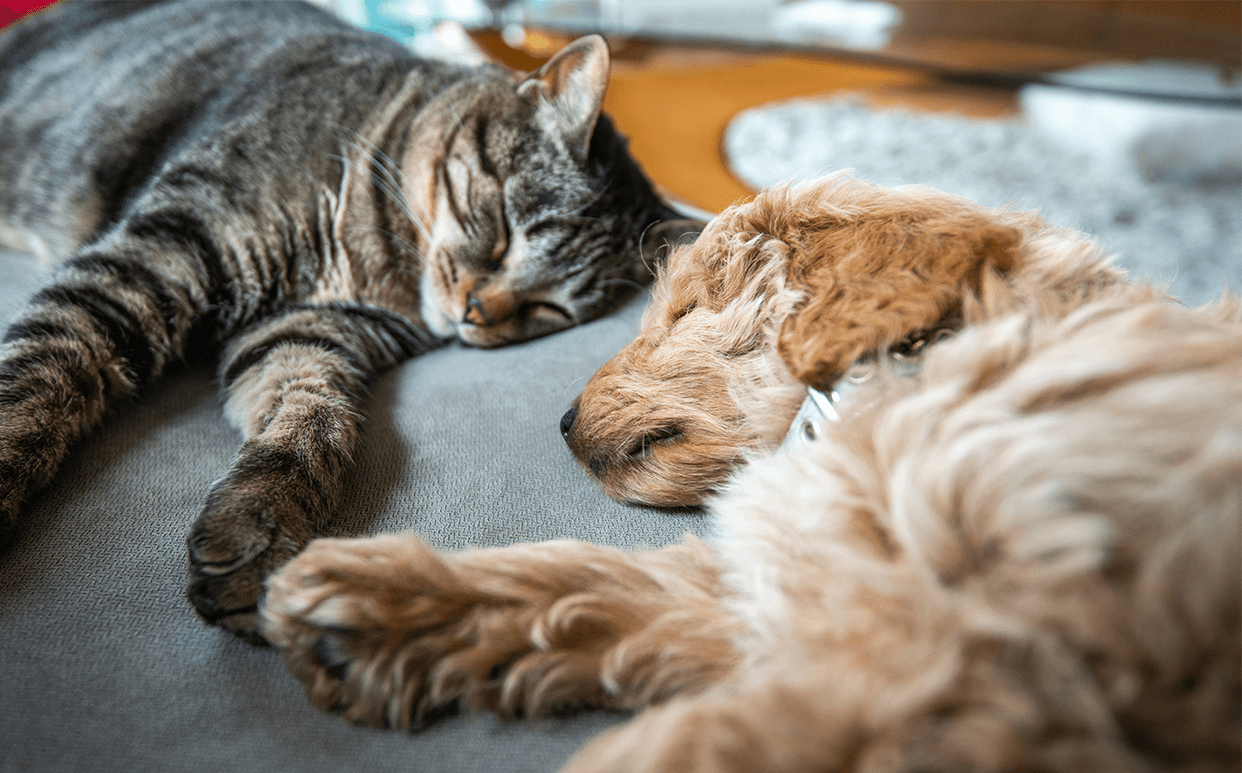Decoding Your Pets Dreams

Do you want to know what pets dream about? Check out this insider information from animal experts to find out. Plus, learn how to decipher their physical sleep clues for yourself!
According to veterinary studies from 2020, domestic dogs and cats sleep an average of 12 to 16 hours a day. If your slumbering fuzzy sweetie’s dreams spark your interest, learn the signs that can tip you off to what is on their mind. Are you twitching to find out? Let’s get started!
Oral and Aural Clues
Does your pet talk in their sleep? Deciphering doggie or kitty dream language is not difficult when you know how to hear it. Whining can indicate distress, as in the case of a nightmare. Also, listen carefully to the pace, rhythm, and depth of their breathing. Shortened or heightened breaths indicate they are dreaming, as opposed to long and evenly spaced ones.
Legs and Paw Clues
Get a leg up on the lower body movements of your snoozing pup or kitty with these insights. Kneading cat paws indicate dreams of comfort and nostalgia for nursing. Dogs often dream of running, particularly in the form of chasing or being chased. A spreading action of the toes can mean they are dreaming of being tickled, brushed, or massaged.
Tail Clues
Are you looking for insight into your pets' sleep state psyche? To curtail your curiosity regarding your pet's dreams, look no further than their tail. Take note if it is wagging, puffed up, held straight, or curled up in a snuggle position. Their tail is talking to you in the same way it does when your pet is awake, allowing you to peek into their emotional dream state.
Eye Clues
Like humans, dogs and cats move their eyes while dreaming. Canine sleep studies reveal dogs do indeed enter into a REM, or rapid eye movement, stage of sleep. Depending on the breed, the REM cycle occurs every 10-90 minutes. It is at this time when you can notice their eyes darting about beneath their eyelids. Experts recommend never waking your pet during this phase of dreaming, if possible.
Skin and Fur Clues
Quivers, trembles, jerks, and small convulsions are all normal skin responses for dogs and cats during dream states. For instance, they may move a patch of skin while dreaming about something little touching them, like a bug. When alarmed or afraid during a dream, pets can exhibit the classic scaredy cat raised fur. Look for a raised coat ridge along their spine to see if your pet has a fear-based dream.
Hopefully, by now, you can lay your curiosity about your pet's dreams to rest. Observe their sleep movements for these clues to hone in on what they are feeling and thinking during their dream state. The best part is, with your newly awakened understanding of your pets' dreams, you can now also have a better understanding of them in their waking state.









